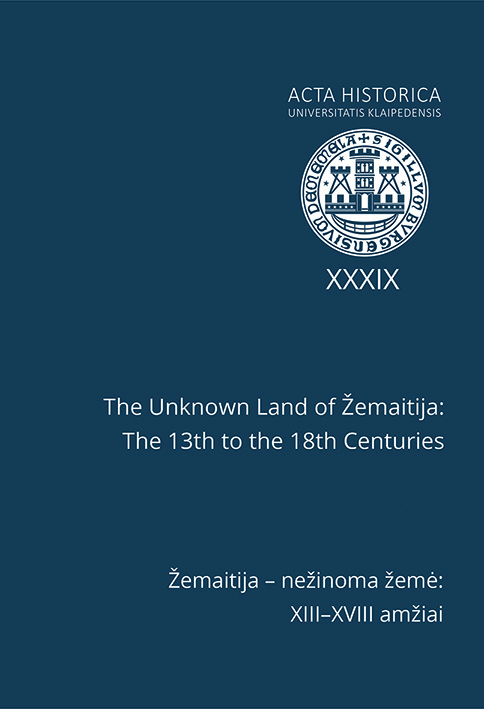Volume 39 (2019): The Unknown Land of Žemaitija: The 13th to the 18th Centuries = Žemaitija – nežinoma žemė: XIII–XVIII amžiai, December 2019

Order by:
Pub. online: 18 Dec 2019
Type: Article
 Open Access
Open Access
Journal:
Acta Historica Universitatis Klaipedensis
Volume 39 (2019): The Unknown Land of Žemaitija: The 13th to the 18th Centuries = Žemaitija – nežinoma žemė: XIII–XVIII amžiai, pp. 195–218
Abstract
Pub. online: 18 Dec 2019
Type: Article
 Open Access
Open Access
Journal:
Acta Historica Universitatis Klaipedensis
Volume 39 (2019): The Unknown Land of Žemaitija: The 13th to the 18th Centuries = Žemaitija – nežinoma žemė: XIII–XVIII amžiai, pp. 219–233
Abstract